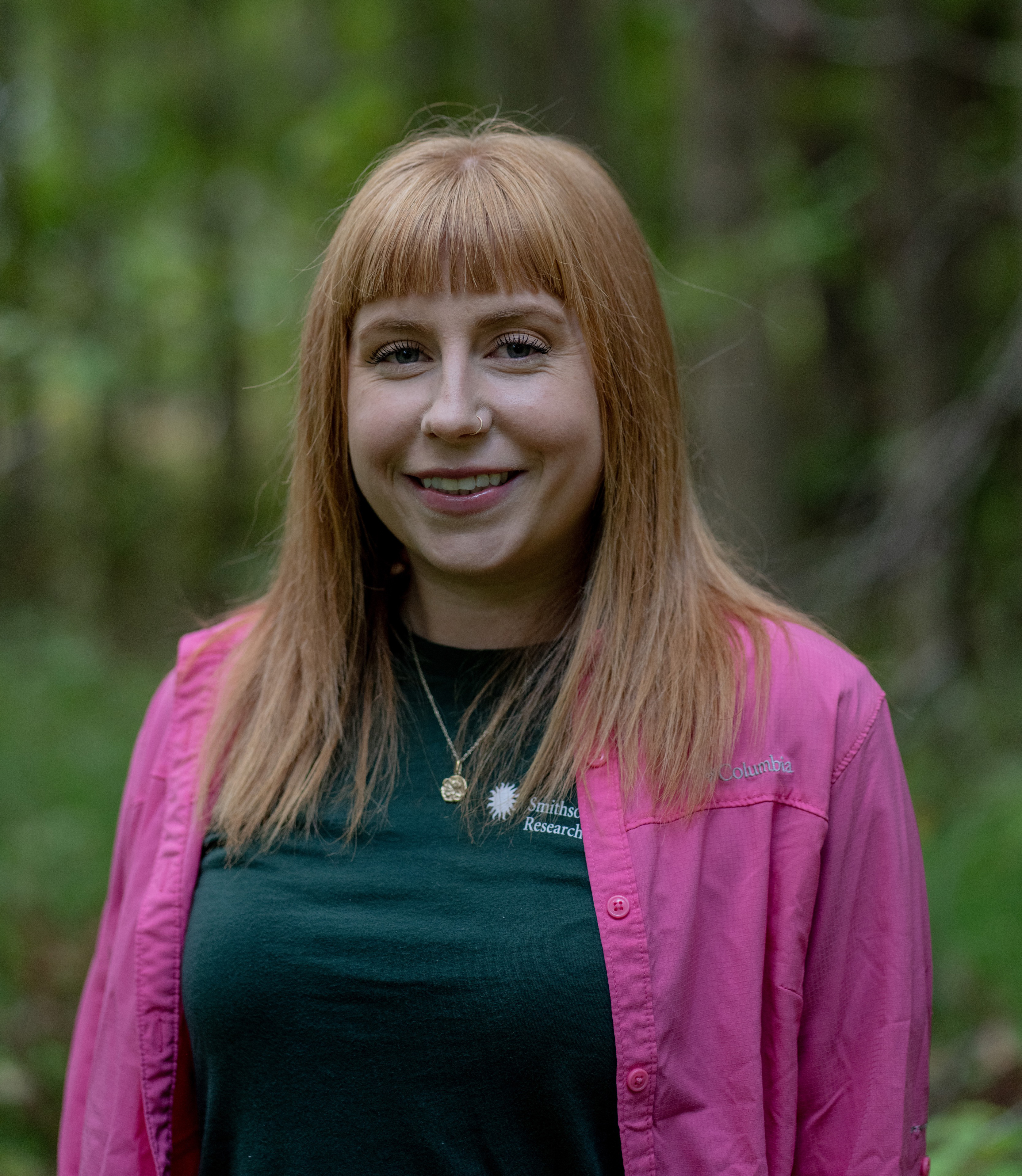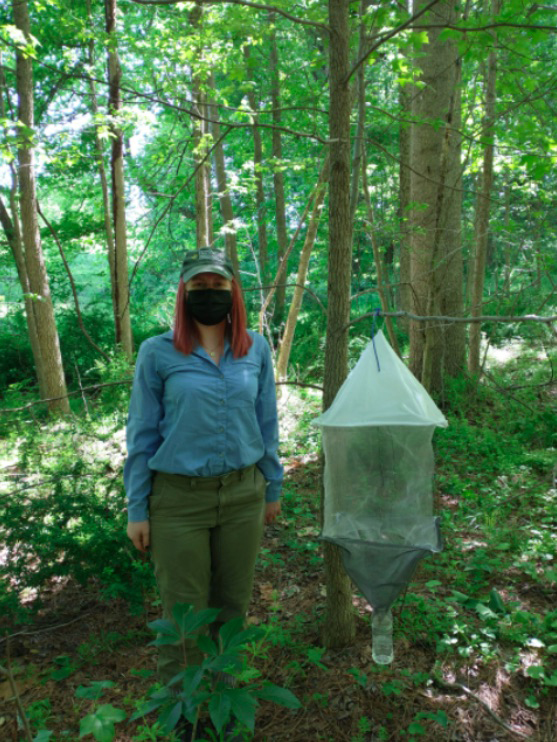by Deva Holliman

To celebrate Arbor Day this month, we’re taking a closer look at forest research with Shelley Bennett, head technician of SERC’s Ecosystem Conservation Lab. Much of the lab’s efforts focus on immediate threats, like invasive species and rising temperatures. However, a new project seeks to uncover what happens when a forest functions normally—including the insects and microbes that feast on its leaves. Learn more in this Q&A. Edited for brevity and clarity.
Q: To start off, could you talk about the project you’re working on?
Shelley: Sure! I’m working on a project [regarding] the interactions between insects, microbes, and trees in the chronosequence forest plot here at SERC. We’re looking at different age stands of beech, sweetgum and tulip poplar trees….Younger stands tend to have more tulip poplar and sweetgum, whereas older stands start to have beech trees. We’re looking at seedlings, saplings and mature trees of the three species and assessing leaf damage by herbivores and microbes.….We’re also sampling the insect community in a subset of the plots and looking at how the interactions between insects and trees change as forests naturally age.
Q: What does an average day in the field look like?
Shelley: Basically, I run around the forest searching for the trees that I want to sample. I look for the three species at the different age levels, and I collect leaves and measure tree growth. [In future years] we’re going to come back to remeasure these same trees and relate the amount of leaf damage to their growth metrics. We hope to compare how much the trees grow every year with the amount of damage they have on their leaves.
Q: What originally inspired this project?
Shelley: For temperate forests, most of the research that’s been done on insect-tree relations has been in the context of pest outbreaks….Very little work has been done on just documenting the baseline of a forest––basically, what happens when there’s not an outbreak. We’re hoping to fill that knowledge gap.
There’s also been a lot of research done in tropical settings looking at how herbivores might affect the succession of forests––for instance, if insects eat seedlings, they will affect which plants survive to be mature trees. We’re trying to better understand that in temperate settings now. We’re not even sure what we’re going to find. We’ll let the data guide us towards what’s going to be an interesting question.

Q: How do you measure leaf damage?
Shelley: We are visually estimating the percent damage of different types of herbivores, such as chewers, skeletonizers, miners and gall formers, as well as microbial damage. We’re also collecting insects through canopy traps….We set the insect traps during June and September, when we expected there to be surges of insects, and then collected our leaves one month later, in July and October, to capture damage that may have been caused by those insects.
Q: What’s your favorite part of the work you’re doing?
Shelley: Working with the interns! It’s been fun interacting with them and having them in the field with me. I also really enjoy finding the trees, because I basically just walk around in the middle of the forest looking for trees. It’s really peaceful. It’s also fun collecting the leaves––we use a tall pruner to reach leaves way up in the canopy. It’s a little difficult, but I’m working out my shoulder muscles!

